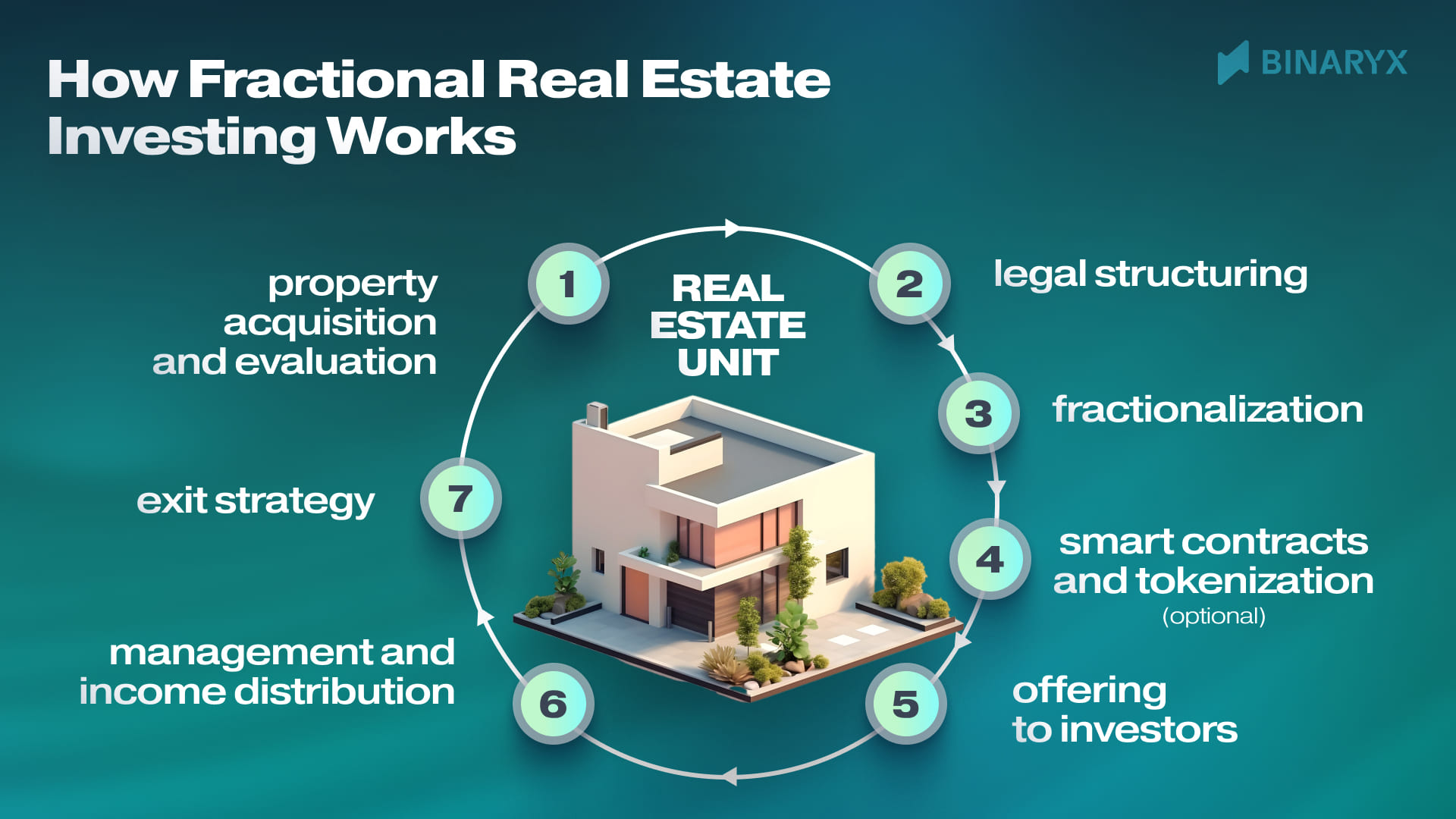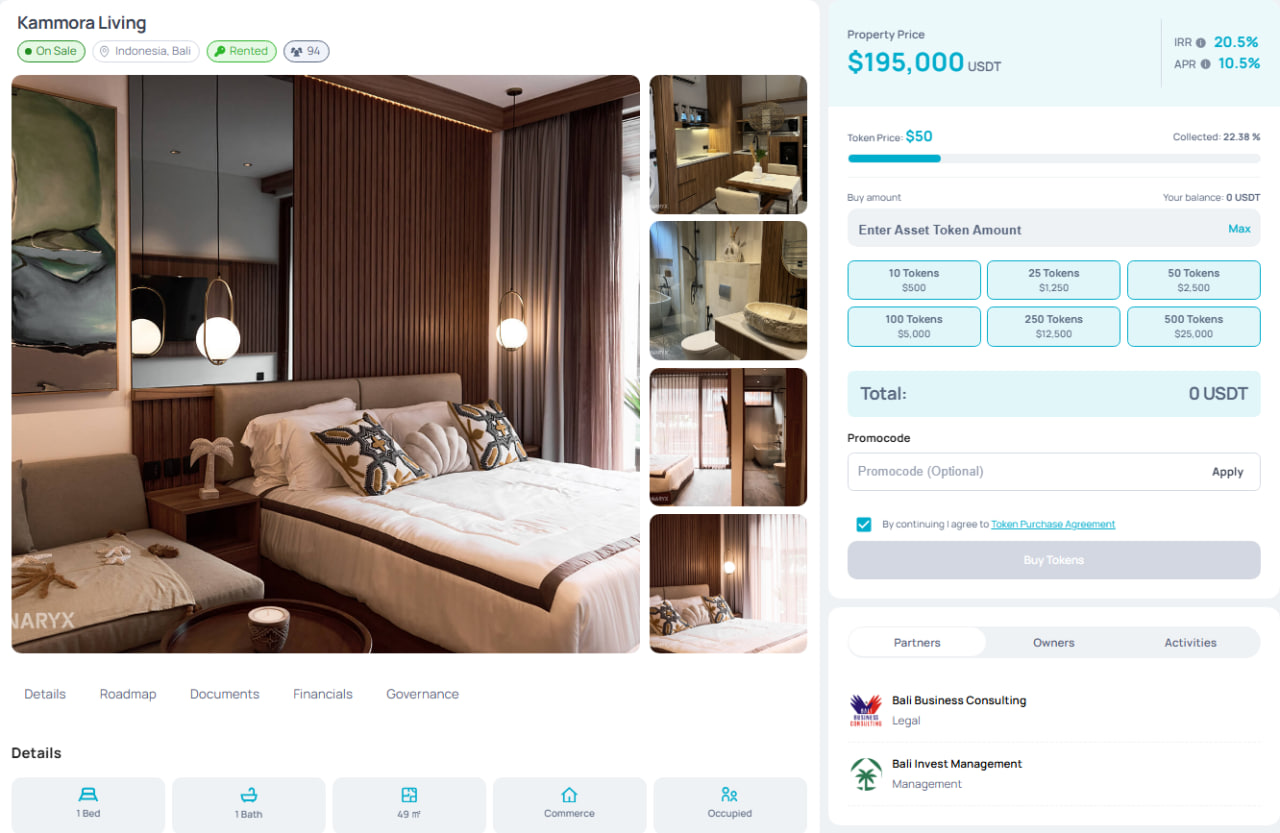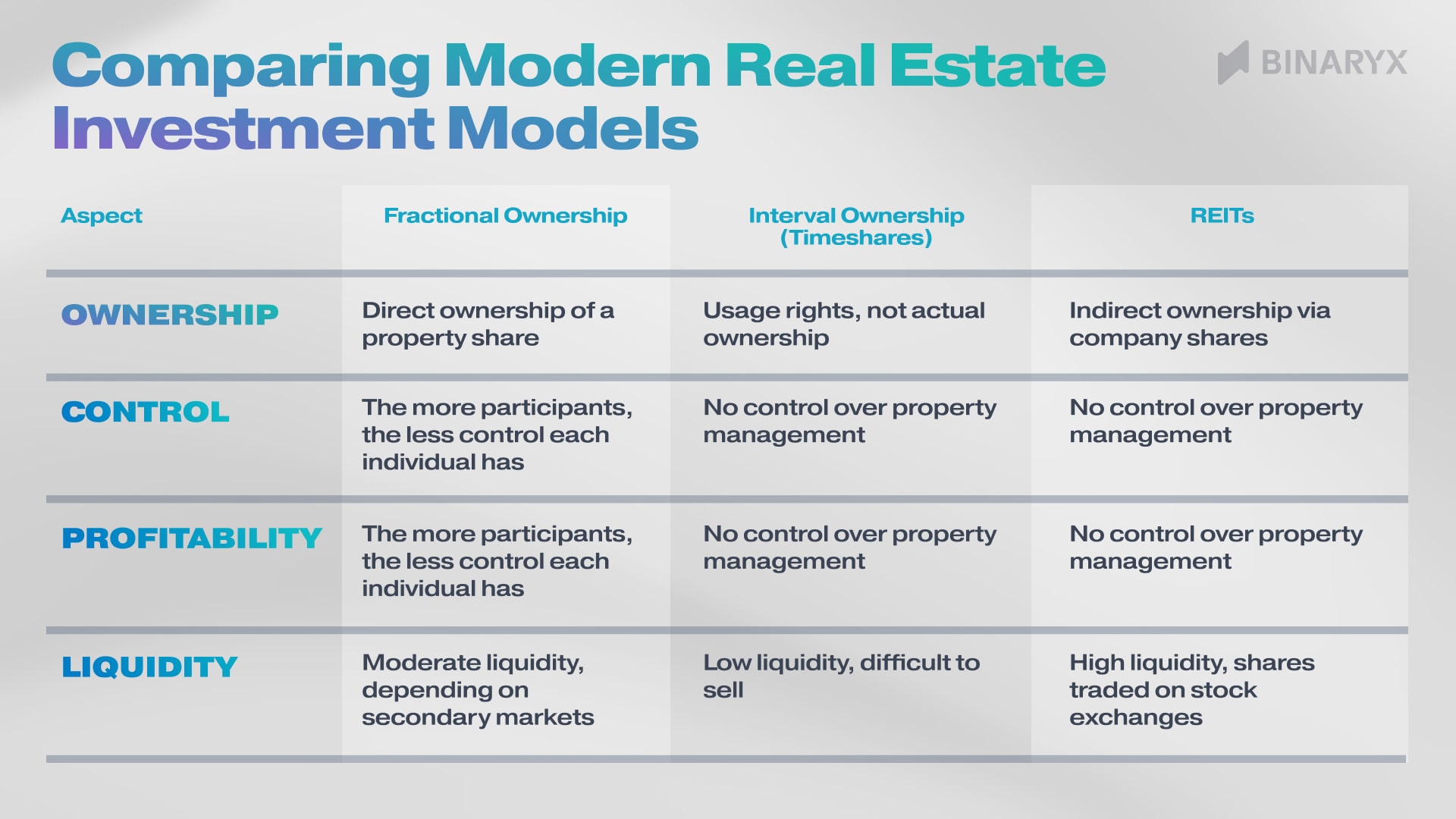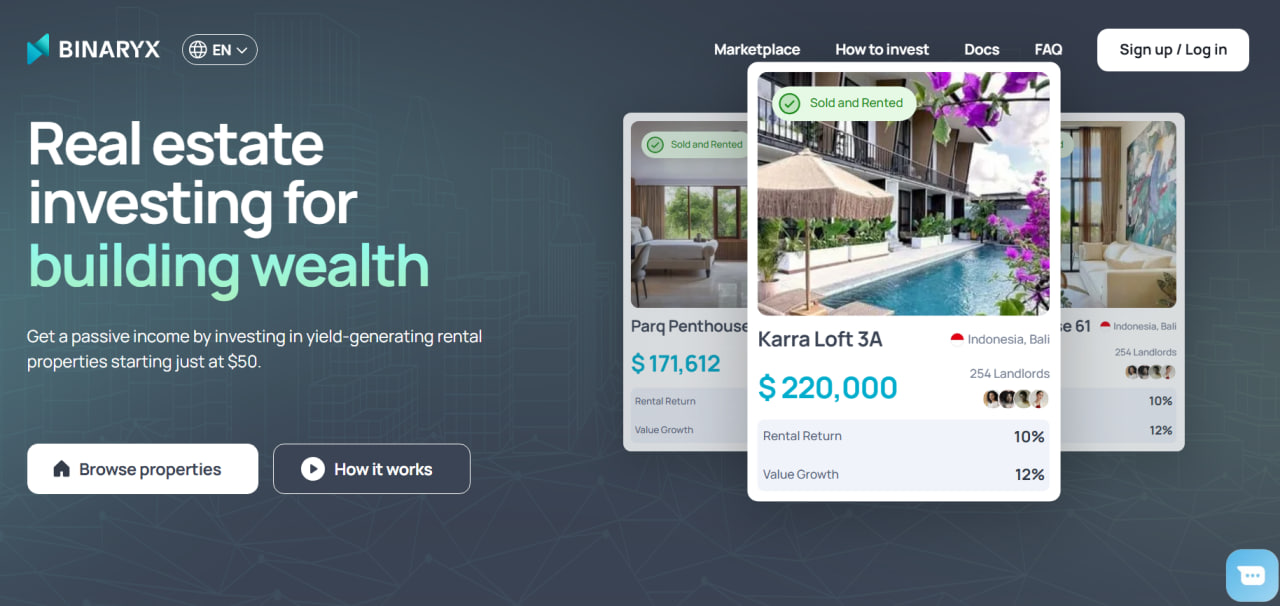Embrace Fractional Ownership: Invest in Real Estate Without Buying the Whole Property

Various forms of property co-ownership have existed for centuries, but modern technology, particularly tokenization, has brought this concept to a new level. Today, fractional ownership allows thousands of people to simultaneously invest in real estate, making property ownership more accessible than ever. In this article, we’ll dive into how fractional ownership works in real estate and how it simplifies the investing process.
Understanding Fractional Ownership
Fractional ownership has gained serious traction with the rise of the sharing economy. Just like Uber transformed transportation and Airbnb shook up accommodation, fractional ownership is doing the same in real estate. The younger generations, particularly Millennials and Gen Z, have embraced the idea of sharing resources rather than owning everything outright. This shift in mindset has opened the door to new ways of thinking about investing and owning assets. Real estate is no different.
Simply put, fractional ownership lets you buy a fraction of an asset instead of the whole thing. Whether it’s real estate, art, or even collectibles, you invest in a smaller portion and become a part-owner. In real estate, this means you can join others in buying a property and gain a share in the asset without the massive capital outlay. It’s a practical way to enter the market, spread your investments across different properties, and reduce risk. Plus, you still proportionally benefit from any appreciation or rental income the property generates.
How Fractional Ownership Works in Real Estate

Fractional ownership in real estate starts when a platform or company finds a promising property and decides to split the ownership. They create a special purpose entity—a company set up specifically to hold the property title. Instead of splitting the property itself, they divide the ownership of the company. Each fraction of this entity represents a share of the property, and you can buy as many as you want.
Some platforms use blockchain to tokenize these fractions, making ownership transfers and income distribution quicker and easier. Once the fractions are ready, you can dive in and grab a slice of ownership. You earn rental income and appreciate the value growth based on the size of your share, and if you ever want to sell, you can list your fractions on a secondary market.
Legal Structures Behind Fractional Ownership: LLCs, LLPs, and Tenancy in Common
The most popular and convenient legal structure for holding and fractionalizing property ownership is the LLC. A limited liability company (LLC) protects its owners from personal liability and operates as a separate legal entity with its own bank account, tax ID, and assets. LLCs handle real estate transactions under their own name, and there’s no limit to the number of members. This means thousands of people can co-own a property. Crowdfunding platforms often use LLCs to offer fractional ownership of real estate.
A limited liability partnership (LLP) is similar but requires at least two partners, unlike an LLC, which can have just one member. Partners in an LLP are usually professionals who share responsibility for the business. However, each partner is only liable for their own actions, not the mistakes of others. LLPs also give partners more control over contracts. Some real estate syndicates choose the LLP structure.
Tenancy in Common (TIC) allows two or more people to share ownership rights in a property, with each holding an individual deed for their portion. Ownership can be unequal, but each owner has equal usage rights. When an owner passes away, their share goes to their heirs rather than the other co-owners. TIC works well for groups who want to share a second home for seasonal use. For example, three families might buy a vacation cabin together under a TIC, agreeing on when each family gets to use the property while keeping their ownership rights separate.
Is Fractional Ownership Right for You? The Upsides and Downsides
Fractional ownership opens up exciting opportunities in real estate, but like any investment, it comes with its own set of pros and cons. Let’s break them down.
Pros of Fractional Ownership:
- Lower Entry Barriers: You can own a piece of high-value property without buying the whole thing. Even premium properties that might be out of reach are now within grasp through fractional ownership.
- Diversification: Owning fractions of multiple properties spreads your risk. Instead of sinking all your funds into one property, you can invest in different types of real estate in various locations.
- Professional Management: With fractional ownership, you don’t need to worry about day-to-day property tasks. Professionals handle everything from maintenance to tenant issues, allowing you to focus on your investment.
- Truly Passive Income: You earn a share of rental income based on your ownership stake. You have a truly steady flow of passive income without the hassles.
Cons of Fractional Ownership:
- Limited Control: As a fractional owner, you give up control over property management decisions. You’ll have less say in how the property is run or maintained.
- Platform Dependence: Your investment is closely tied to the platform managing the property. If the platform runs into financial or operational problems, it could affect your returns or ability to manage your shares.
- Higher Volatility: Increased liquidity can lead to greater volatility. As it becomes easier to buy and sell shares, property values may fluctuate more often, impacting the value of your investment.
How Tokenization Enhances Fractional Real Estate Ownership

Tokenization has transformed fractional real estate ownership by turning property fractions into digital tokens on a blockchain. This ensures both security and transparency, while smart contracts handle key processes like ownership transfers and rental income distribution, making everything faster and hands-off. No more intermediaries or manual paperwork—it's all automated.
The real game-changer is liquidity. Before tokenization, fractional ownership often meant being locked into an investment for months or longer. Now, with tokenized assets, you can trade your fractions on secondary markets anytime. This flexibility enhances your real estate investing experience, making it more accessible and dynamic. Tokenization opens up new opportunities for investors—check out our article to explore its full potential.
Case Study of Fractional Ownership: Binaryx's Approach
Now let’s explore the benefits of fractional ownership using a real-life example from the Binaryx Platform—a $195,000 rental villa in Bali. This step-by-step breakdown shows how fractional ownership makes real estate investing easier than ever before.

- Evaluating and Preparing the Property:
First, the Binaryx team evaluates property, determining its market value, potential rental income, and overall investment viability. We thoroughly review all legal and financial details to make sure the property is a solid candidate for fractional ownership. In this case, we-ve chosen Kammora Living. - Establishing an LLC:
To hold the villa’s title, Binaryx sets up a limited liability company (LLC). This LLC becomes the legal owner of the villa, providing clear ownership rights and legal protection for investors. - Fractionalizing the Property:
Then we split the LLC into fractions and tokenize them. For instance, the total value of Kammora Living is divided into 3,900 tokens, with each token representing a $50 fraction of the LLC. - Offering to Investors:
Once the property is fractionalized, we start fundraising through the Binaryx platform. You can decide how many percents of ownership you want and purchase a matching amount of tokens. For example, if you buy 100 shares, you’ll own approximately 2.56% of the LLC, and, therefore, 2.56% of the villa. - Managing the Property and Distributing Income:
The Binaryx team handles property management throughout the investment period. This includes maintaining the villa, managing tenant relations, and collecting rental payments. Fractional ownership entitles you to a corresponding share of the rental income generated by the property. Income distribution is seamless and automatic. - Exiting the Investment:
After an initial holding period, Binaryx provides investors with the option to sell their shares on a secondary market. Thus, you can cash out before the property is sold, and go on further in your investing journey.
Comparing Investment Models: Fractional Ownership, Timeshares, and REITs

Timeshares (Interval Ownership)
Timeshares operate on a completely different model. With a timeshare, you don’t own part of the property itself—you simply own the right to use it for a set period each year. Typically, timeshares are shared by as many as 52 owners, each securing a week of use. While timeshares can offer vacation opportunities, they don’t provide ownership in the traditional sense. There’s also less flexibility compared to fractional ownership, as selling a timeshare can be complicated and often results in financial losses. Liquidity is low, and control over the property is non-existent since you’re only buying time, not ownership.
Real Estate Investment Trusts (REITs)
REIT is another entirely different approach to real estate investing. When you invest in a REIT, you’re buying shares in a company that owns and manages a portfolio of properties. This makes REITs a more passive investment compared to fractional ownership. While REITs offer higher liquidity—since shares are traded on major stock exchanges—you don’t own any specific properties. Instead, your returns come through dividends based on the REIT’s overall income. REITs offer diversification and ease of entry, but they lack the control and direct ownership benefits of fractional ownership.
Simplifying Real Estate Investing with Fractional Ownership
Fractional ownership has reshaped the real estate landscape by making high-value property investments more accessible and flexible. With benefits like lower entry barriers, diversification, and passive income, it’s clear why this model is gaining popularity. Tokenization has further enhanced fractional ownership, increasing liquidity and streamlining the investment process. While challenges like limited control and platform dependence remain, the advantages often outweigh the downsides. If you’re ready to explore the potential of fractional real estate ownership, the Binaryx platform offers a simple and secure way to start your journey.

Articles you may be interested in




.jpeg)





-min.jpeg)


.webp)